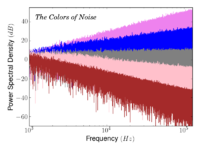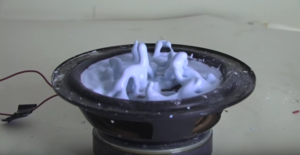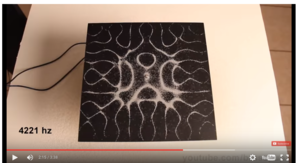Difference between revisions of "User:LV/CRAFTING FUTURE MEMORIES"
| Line 21: | Line 21: | ||
Tokujin Yoshioka <br> | Tokujin Yoshioka <br> | ||
[[File: nikolatesla.png | 300 px ]] | [[File: nikolatesla.png | 300 px ]] | ||
| − | Nikola Tesla <br> | + | Nikola Tesla / https://www.youtube.com/watch?feature=player_embedded&v=wvJAgrUBF4w <br> |
| + | <br> | ||
| − | + | - http://www.wired.co.uk/news/archive/2011-04/7/colours-of-noise <br> | |
| − | http://www.wired.co.uk/news/archive/2011-04/7/colours-of-noise <br> | + | Ever wondered why white noise is white? It's not the only colour of noise you can get. There are a handful of others too -- which are used in a variety of different situations, including acoustics testing, electrical engineering and hard physics. |
| + | They're separated from each other by their spectral density -- the way the power that the signal contains is distributed over different frequencies. Different spreads are given different colour names, including white, pink, brown, blue, violet and grey. Here's how they differ from each other, and what they tend to be used for. <br> | ||
Revision as of 19:26, 22 October 2015
Stan and Lisa are on the 'Sound' team.
research
- https://en.wikipedia.org/wiki/Colors_of_noise
:

- http://sleepjunkies.com/features/sleep-soundly-with-white-noise/ :
In simple terms, white noise is a special type of sound signal which is used to mask background sounds.
When used to promote healthy sleep, white noise helps to drown out sounds which might otherwise prevent you from either falling asleep or waking up whilst asleep.
- http://web.cs.wpi.edu/~matt/courses/cs563/talks/noise/noise.html

- https://www.youtube.com/watch?t=4&v=3zoTKXXNQIU

- http://gizmodo.com/5-eye-popping-designs-that-visualize-sound-1465350320
 Tokujin Yoshioka
Tokujin Yoshioka
 Nikola Tesla / https://www.youtube.com/watch?feature=player_embedded&v=wvJAgrUBF4w
Nikola Tesla / https://www.youtube.com/watch?feature=player_embedded&v=wvJAgrUBF4w
- http://www.wired.co.uk/news/archive/2011-04/7/colours-of-noise
Ever wondered why white noise is white? It's not the only colour of noise you can get. There are a handful of others too -- which are used in a variety of different situations, including acoustics testing, electrical engineering and hard physics.
They're separated from each other by their spectral density -- the way the power that the signal contains is distributed over different frequencies. Different spreads are given different colour names, including white, pink, brown, blue, violet and grey. Here's how they differ from each other, and what they tend to be used for.